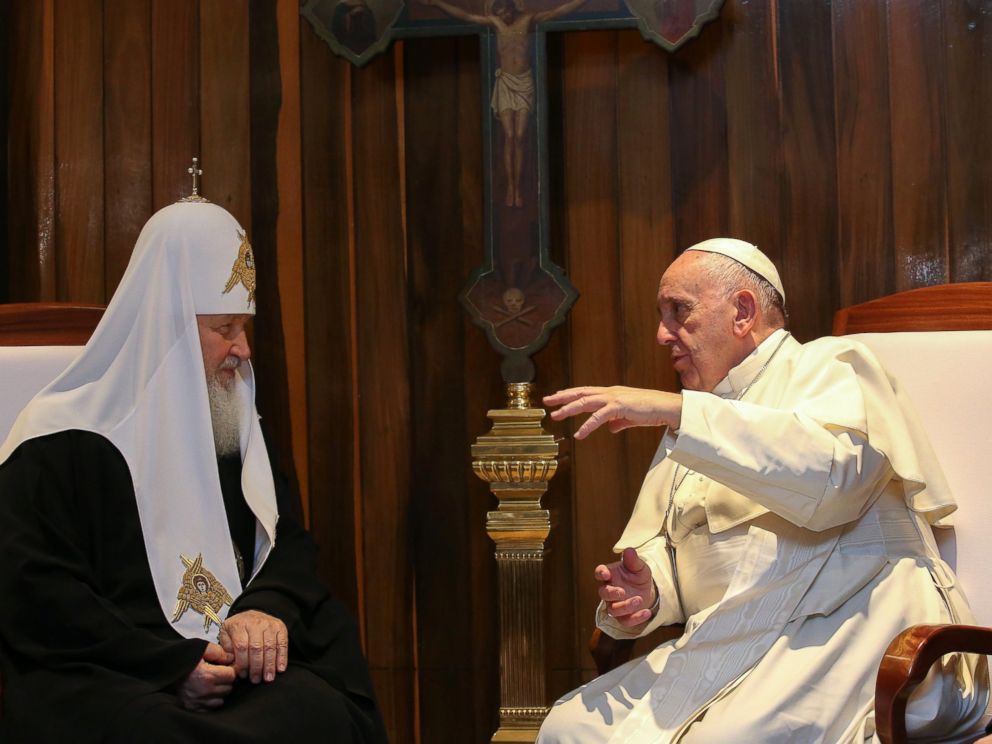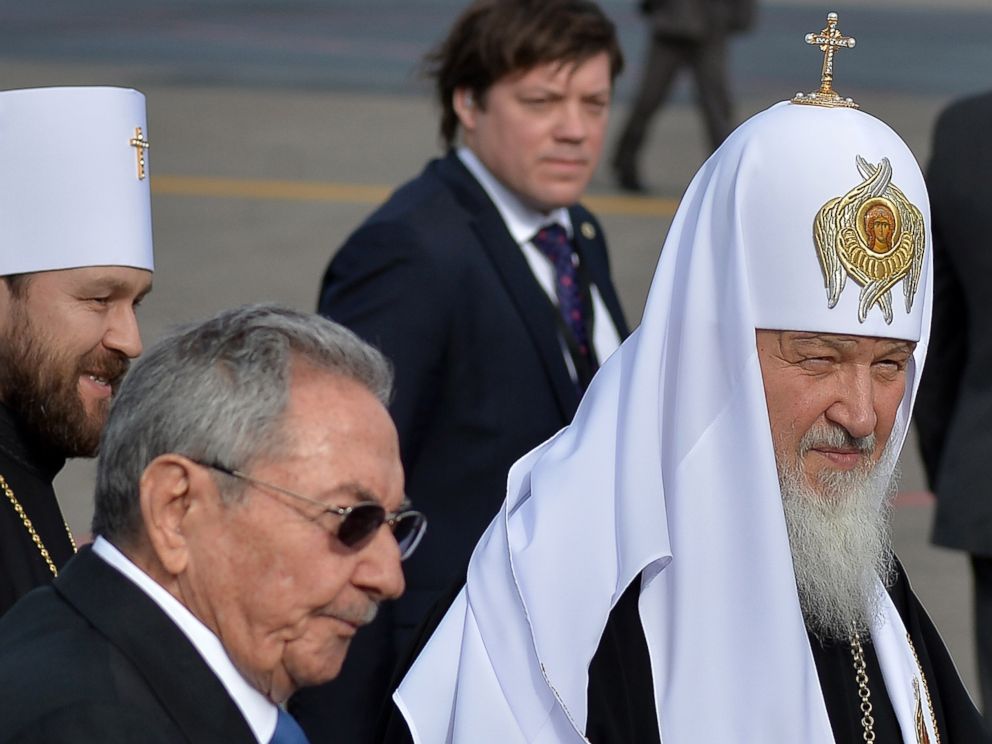Pope Francis Arrives for Historic Meeting 1,000 Years in the Making
The heads of the Catholic and Russian Orthodox churches are meeting today.
— -- Pope Francis met today with the head of the Russian Orthodox Church in Havana, bringing the heads of the Russian and Catholic churches together for the first time since Christianity split.
Patriarch Kirill was the first of the two leaders to arrive in Cuba.

Lengthy Lead-Up to the Meeting
The meeting is about 1,000 years in the making, as the two faiths split in the 11th century.
Popular convention dates the split of the Catholic and Orthodox churches to the so-called Great Schism in 1054, when the western pope excommunicated the head of the eastern church in Constantinople -- now Istanbul -- over differences in worship practices. The split solidified into centuries of deep hostility, with the two sides differing over a number of doctrinal issues, most importantly the pope’s status as Christianity's supreme authority on earth.
Hatreds have cooled in the past century, and both sides now tend to avoid publicly calling each other heretics.
"There were both surface issues and deeper issues," Monsignor Paul McPartlan, a theology professor at Washington, D.C.'s Catholic University, told ABC News. He noted that the types of bread used for the Eucharist and the question of celibacy for priests were among the surface issues while the deeper issues related to the power structure and geographical spread of the church.
Today's meeting will not actually be the first between an Orthodox Church leader and a pope: In 1964, Pope Paul VI met with the Ecumenical Patriarch of Constantinople, formally recognized as Orthodoxy’s spiritual leader, but whose authority is contested by the Russian church.
"That really was the breakthrough for Catholic-Orthodox relations," McPartlan said.
On board the plane from the Vatican, Pope Francis spoke briefly to the group of reporters traveling with him and said this trip is one that he and his "brother" Kirill are eagerly anticipating.

Location, Location, Location
The choice of Cuba as the meeting spot also falls under the question of territory, as it is seen as somewhat neutral land because Cuba has long had ties to the Russians but it also has a large Catholic population and it hosted Pope Francis in September.
Pope Francis will be in Cuba for only about three hours before heading to Mexico.
"The meeting has a political, a humanitarian significance," said Yevgeny Nikiforov, a prominent Russian historian of the Church who helps run an Orthodox radio station. "But it has no divine significance."
Different Approaches to Religious Leadership
They are two very different figures: Pope Francis is known for being humble and regularly is driven in a Fiat, while Patriarch Kirill was once spotted wearing a $30,000 watch and is driven by chauffeur in a black Mercedes.
Under Kirill, the Russian Orthodox Church has grown close to the Kremlin, to the point where it often acts like a branch of the government. He is extremely close to Putin and often blesses or paves the way for some of Putin's most controversial moves like the anti-gay law and clandestine military action in Crimea.
How Will This Change Relations?
John Julius Norwich, a best-selling historian of the Byzantine Empire, as well as of the papacy, said he believed the meeting was likely part of a broader effort by Francis to try and strengthen a Catholic church under assault by changing lifestyles in South America and mass violence in the Middle East.
"It is a step towards reconciliation, there is no question about it,” Norwich said. "But I think it's going to be very much on the surface."
"It's angels dancing on the head of a pin," he added. "But they've been involved in it for 1,700 years. It's going to take an awful long time to get over that. I can see it maybe getting to where they are much, much nicer to each other than they have ever been, but deep, deep down still hating each other's guts."
Monsignor McPartlan was slightly more optimistic.
"I think it's a big step forward in ecumenical relations and it's a sign of hope for the world at large," he told ABC News today. "Not all of the issues are yet resolved, however, this meeting shows the firm desire for reconciliation and sends a powerful message to the world at large about the need for peace and reconciliation."




